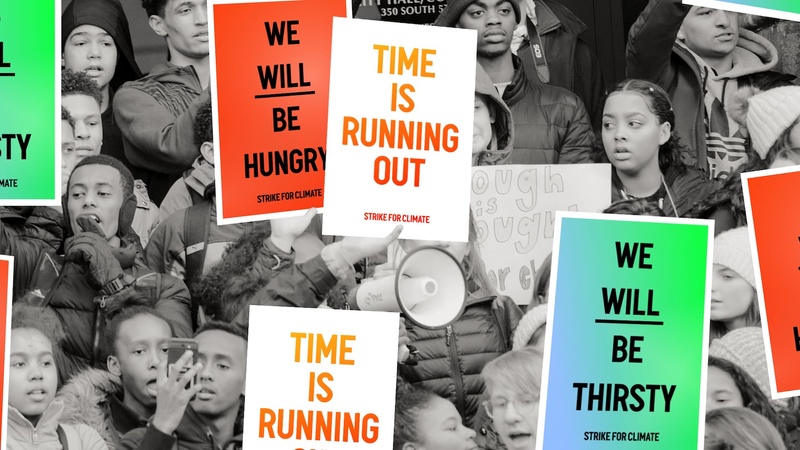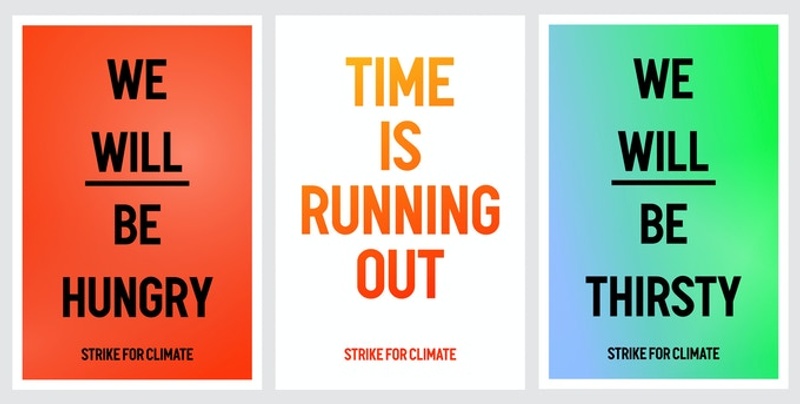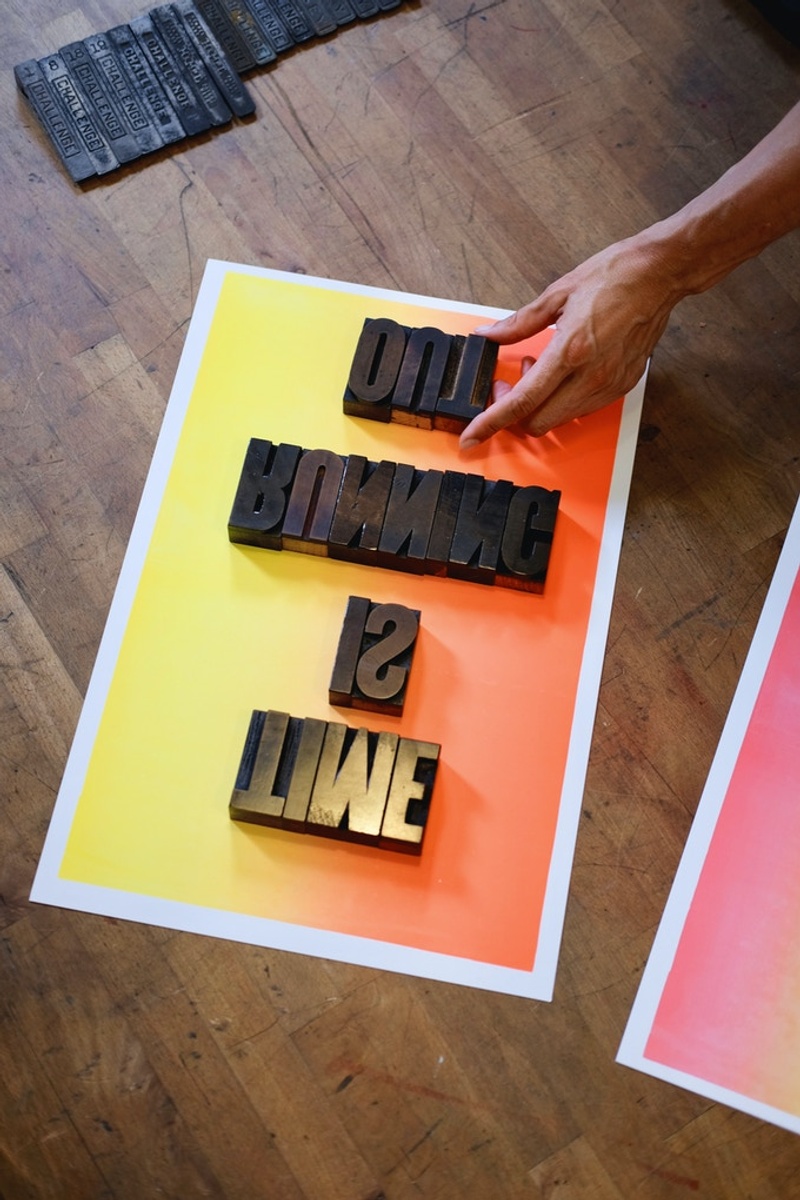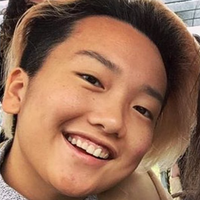On finding the words for crisis and making the planet feel personal
Prelude
Jon Leland is an environmental activist who has run Kickstarter campaigns about rising sea levels, the widespread impacts of climate change, animal mediations, and, most recently, the communities most at risk of wildfires. He once made a snail meditation for TCI. He’s also Kickstarter’s VP of Insights and leads the Environmental Impact Group.
This conversation is part of our Signs of Change series highlighting creators who have previously launched activist posters, broadsides, stickers, and zines on Kickstarter and encouraging newcomers to participate in Kickstarter’s open call for projects
Conversation
On finding the words for crisis and making the planet feel personal
Environmental activist Jon Leland on designing public interventions, personalizing abstract ideas, and why social othering hurts our chances of beating back the effects of climate change.
As told to Katheryn Thayer, 2081 words.
Tags: Activism, Design, Politics, Inspiration.
What inspired you to make the Time Is Running Out project? Can you take us back to what was happening in the world then and why you wanted to put these signs up?
Last fall, the Global Climate Strike was the first really big climate protest that I participated in, and I think it was a lot of people’s first time participating in climate activism in that way. I was helping lead Kickstarter’s own efforts to participate in the digital strike, and I wanted to provide something for people to hold up and share.
I’ve long been interested in messaging around climate change. It’s an extremely difficult topic to communicate with simple messages, because it’s so overwhelming, complex, and expansive. Finding simple phrases that speak to the urgency and the complexity of the issue is something that I’ve really been fascinated by and worked on both at Kickstarter and outside of Kickstarter.

What are some of the high-level things that you have learned about messaging? And how did you decide on the phrases that you went with in your posters?
On messaging, one, keep it to as few words as possible. You really have to go over every word and ask why it’s there and whether it’s going to be compelling. You don’t have people’s attention for very long, whether you’re making posters, stickers—which I’ve done for other projects—or something on the internet. You have people for a brief moment.
The question is, “What can you insert into the reader’s brain that’s going to actually plant a seed and maybe grow into something else?” Most people who see it aren’t going to remember it or register it, but you want some percentage of people to absorb the message in a way that sticks with them. So another piece of making the messaging resonate is trying to find a way to make it personal for people, so it’s not just some abstract concept about why this is important, but to relate it to someone’s own lived experience of who they are, what their dreams are for themselves, or their ideas of themselves. It’s usually more effective than talking about something in more abstract terms.
For the messages on your posters, it’s interesting that you not just personalized it with the immediacy of, “We Will Be Thirsty,” but you also made it collective and future-tense. That seems very appropriate to this topic. How did you nail down those three sign slogans?
For [the posters that say], “We Will Be Hungry,” and “We Will Be Thirsty,” I was inspired a bit by the “I Am a Man,” posters from the Civil Rights Movement in the 1960s. And it’s the type of thing that I think the people trying to mobilize around climate change are looking to do: to pull everyone else in, to say that this is something we’re all going to face. We’re all going to be confronted with issues around hunger and thirst that arise out of climate change—or the vast majority of us will. And those are really powerful, primal threats. A lot of people don’t see that possibility for themselves—they think it’s going to impact other people, not them—but if you dig into climate change research, that’s not the case. It’s going to be everyone, everything. So I wanted to give a broad range of people who look like a lot of different parts of our society the chance to hold up that sign, and for people seeing that to say, “Oh, that person looks like me.” It’s trying to get away from the numbers and the science and all of that stuff to just say, “This is what’s going to happen to us.”
Can you tell me more about the “I Am a Man” inspiration, the overlaps in environmental justice and racial justice, and how these things are connected for you?
So “I Am a Man” is an iconic poster from the Civil Rights Movement that a lot of Black men held in marches. “Am” is underlined, it’s an affirmation of personhood. We see this today with Black Lives Matter. It’s the same message of demanding that people recognize their equal humanity, and it’s also an acknowledgement that their humanity has been denied for so long. That’s part of the reason why “Black Lives Matter,” and “I Am a Man,” are such powerful statements, because they state a fact that has not been true in many ways.
I just love how simple and powerful that is. And so in this case, I’m trying to project it to the future. So as opposed to where we are now or where we have been, it’s what will happen to us, what will be our condition, and trying to put that in a form that again, sort of makes it about how all of us are going to face this, to break past the othering which has been the problem with the civil rights movement and is still a huge problem in the climate change movement. This is also why the climate justice movement is so important in rapidly folding in the civil rights impacts of climate change. Climate change of course will impact everyone, but it’s going to impact marginalized communities and the developing world the most by far, and the most quickly.

To your point earlier, a lot of people make that the shorthand—like, “Oh, it will be them, disproportionately them, not me.”
Right, but it’s also impossible. What impacts “them” impacts us. Even the beginning impacts of the climate change crisis show this to be true. Syria, for example, has faced devastating drought for years due to climate change, and that is so much of what drove the instability in that country, which then drives mass migration throughout Europe and destabilizes an entire continent.
What was your production process like? What are some things that you learned just on a more tactical level that maybe would be helpful for first-time creators to understand if they’re starting new projects?
Yeah. We didn’t have much time for this project. We decided to do it and then we had two weeks.
I knew I wanted really bright visuals and great color, and you can only do that in certain ways: You can do regular machine printing or silk-screen printing, but that’s usually outsourced and takes a long time, so that was kind of off the table. Then we looked at risograph printing, which I really liked the aesthetic of, but you can’t do in large format very easily. So I wound up doing a letterpress with a local printer in Brooklyn and kind of going over there and making these by hand with two collaborators on the project over the course of several days. It was really fun. It’s very limited in what you can do, because it’s physical blocks of texts, hand carved, often from like, the 1800s. You put the letters into this machine and roll it across the paper. So you’re really limited in what you can do, but you get really beautiful coloring and printing, and we were really happy with how it turned out.
From working, I’m guessing, mostly in digital media before that, were there things you really wanted to do that weren’t possible in there or things that you liked about working more analog?
The physical process of just being around giant machines with big levers you crank with a huge wheel was really enjoyable, given that I do so much on a computer. It’s way more satisfying than just pressing buttons. The restrictions on design were at first frustrating, but also simplified the process and made it easier to just focus in on the messaging itself. So some of my design ideas I couldn’t do, but that was fine.
What did you feel like was the value of having the printed materials like this instead of a digital campaign? How did it hit different than something you see on the internet?
I really like making climate change messaging physical because the impacts will be really physical. I think consuming information digitally also makes things feel more abstract frequently, unless it’s raw footage of something. If you’re just consuming information about what will happen in the future, it all seems so theoretical. And so the more you can ground these issues in the physical world, where all of this will actually take place, I think the more it helps people kind of feel it a little bit differently in their body.
What was it like taking these out to the climate march and seeing your backers with them?
Oh, it was so fun. The project went out to backers themselves and then the project paid for a lot more posters to be produced. So I just went out to the march and handed out posters for hours and people were super excited. People took them home and put them in their shop windows and stuff and posted them on Instagram afterwards. It was lovely to see all kinds of people just running up to grab them—families, little kids. Yeah, it was great.

You have a new project in the works. What will that be? What’s the theme?
I’m working with Amanda Rios, a designer at Kickstarter, on a project called “This Place Will Burn.” It combines the first-ever—as far as I’m aware—county map of wildfire risk in the United States and how that will change over the coming decades due to climate change. I’m combining that with a campaign where people living in those areas can post these posters and stickers in their communities to try to raise awareness and mobilize the community to combat climate change. Those counties will be experiencing large wildfires, many of them more than once every year or two.
Do you imagine the project is going to be more preaching to the choir and helping communities that understand that they’re in the wildfire zone have a physical, visual way to make their community come together on this? Or do you think there are some really surprising places from what you’ve seen in the data so far?
I’m hopefully arming the choir to preach to their communities. That’s the aim of this project. It’s pretty much all out West, as you might expect, but the degree to which the risk profile is changing for these communities is terrifying. And it’s changing over the next 20 years. So this project is about giving people who are concerned about this issue both the information and some messaging to make their communities aware of the increased risk and to give them the data to push their local governments to act on this issue.
Is there anything you’re doing differently with this campaign based on things you’ve learned from your previous ones, maybe things that would be helpful for other creators to hear about?
For this one, I’m spending more time upfront figuring out exactly how I’m going to do the manufacturing and shipping. Shipping posters is really difficult. And so I’m hoping to actually just use a drop-shipping service to help me fulfill this project.
Last time I did all of the printing, packaging, and shipping on my first project by myself. It was really tough and finding even just like, the right packaging envelopes for posters is really hard. I had to hand-crease the envelopes to be different than what they were designed to be. It was a mess. So I’m hoping to spend more time up front to get proofs, to really make sure everything lines up, and then outsource packaging and shipping of the rewards to a service because it will cost a little bit more, but it’ll save me days of work.
Jon Leland’s 5 Things to read or listen to on climate change:
The Uninhabitable Earth by David Wallace-Wells
Climate Justice: Hope, Resilience, and the Fight for a Sustainable Future by Mary Robinson
Orange World by Karen Klein
My Climate Journey hosted by Jason Jacobs (podcast)
The Sixth Grandfather: Black Elk’s Teachings Given to John G. Neihardt edited b Raymond J. DeMallie
- Name
- Jon Leland
- Vocation
- Environmental activist
Some Things
Pagination



